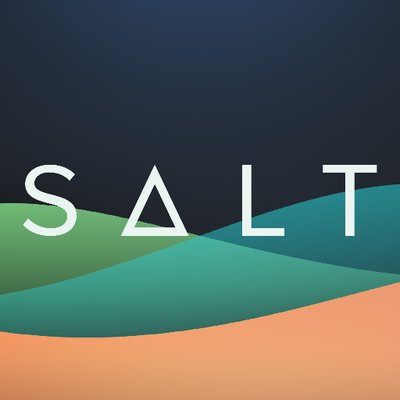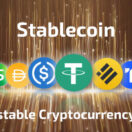SALT (Secured Automated Lending Technology) is a blockchain lending platform based in Denver, Colorado. The platform enables users to secure cash loans using blockchain assets as collateral; offering a compelling solution to a problem many people face when they need cash but don’t want to liquidate their assets to get credit. Instead of selling their assets, users can join the SALT lending platform to leverage the value of their assets and get credit without having to deal with taxes or hefty fees.
SALT doesn’t have any origination fees, prepayment penalties, or closing costs on fixed-rate term loans arranged through the platform. Members can choose to pay off their loans early at no additional cost to them, which is a strong contrast to the terms often offered by traditional lenders.
Unlike traditional lenders, SALT doesn’t care about a user’s credit score. The platform only uses the value of a borrower’s collateral to determine the terms of a loan. Lenders start the process by posting their terms. Borrowers can look through the various terms offered and choose one that best suits their needs. Once a borrower chooses a loan, the lender commits the cash funds and the user sends the agreed collateral to SALT. The loan is sent directly to a borrower’s bank account and they then have to pay monthly installments based on the terms of the loan. After the loan is paid off, SALT releases the collateral and sends it back to the borrower’s wallet.
Salt Pricing, Market Cap and Volume
SALT was released in an ICO that was held in Q3 2017. The supply caps at 120 million tokens and 58.9 million are already in circulation. The SALT team reportedly holds 56% of the available supply.
The price of SALT dipped after the ICO but regained an upward momentum in the months that followed. Its price reached an all-time high of ~$17 USD with a market cap of ~$959 million USD in December 2017 following the official launch of the lending platform. The price has since dropped and reached as low as ~$2 USD for unclear reasons.
How SALT Works
The SALT lending platform is built on Ethereum smart contracts and uses protocol and asset agnostic architecture to automatically manage blockchain-backed loan agreements between borrowers and lenders. SALT has an oracle smart contract that automatically manages loan agreements. The oracle serves the following functions:
Secure Collateral Storage – the oracle sends blockchain assets used as collateral to a fully audited, secure multi-signature wallet for the duration of the loan.
Credit Agreement Terms Enforcement – the oracle autonomously monitors the origination of the loan, directs cash from the lender to the borrower, and tracks the monthly payments the borrower sends to the lender.
Automatic Collateral Management – the oracle combines real-time global market price metrics from several data channels to assess the market valuation of the collateral used in a loan agreement, while simultaneously tracking the borrower’s loan balance.
If the value of a borrower’s collateral increases, they can either add the increased value to the principal in exchange for more credit from the lender, or they can withdraw the excess collateral. The availability of these options will depend on the terms of the loan. The oracle will issue a maintenance call to the borrower if the value of the collateral depreciates below a determined threshold. The borrower can either increase the collateral, send an additional payment to reduce their loan balance, or do nothing and the oracle will automatically liquidate a portion of the collateral to recalibrate the loan.
If a borrower misses their monthly payment, the oracle automatically liquidates a portion of their collateral and gives it to the lender as payment on the borrower’s behalf. For security, a minimum of three signatures are required to trigger a liquidation event. The liquidation threshold is determined by the lender and is clearly outlined in the loan agreement. Borrowers must agree to the terms before receiving a loan.
Membership Fees
Users are required to pay a membership fee to join the SALT lending platform. The platform has three membership tiers:
Base – 1 SALT per year and borrow up to $10,000 USD
Premier – 10 SALT per year and borrow up to $100,000 USD
Enterprise – 100 SALT per year and borrow up to $1,000,000 USD
Each tier entitles a user to different perks. The higher your membership tier, the more money you can borrow across different currencies with more flexible loan terms.
Borrowers are also subjected to Know Your Customer (KYC) and Anti-Money Laundering (AML) restrictions and are required to send SALT a valid ID before applying for a loan.
Lenders don’t need to have blockchain assets to become members, but they must be accredited investors under U.S. SEC regulations and have passed SALT’s Lending Suitability Test.
The SALT lending platform went live on December 27, 2017. It was first opened to a small number of users as the developers continued improving the quality and security of the platform. Loans will first be issued to Enterprise members, followed by Premier members, and then Base members.
SALT Tokens
SALT has a utility token that can be used to:
– Pay for membership and gain access to loans and other benefits
– Repay loans and interest
– Buy products and services on SALT’s web store
The platform has set the value of 1 SALT at $27.5 USD, which is significantly higher than the price of SALT on public exchanges. This situation creates an interesting arbitrage opportunity.
If you have the resources, you could technically get a Premier membership and then apply for a $100,000 USD loan with $125,000 USD worth of Ethereum as collateral. You could then buy $100,000 USD worth of SALT tokens on external exchanges and then repay your loan with the tokens using the lending platform’s set value and pocket the difference.
Unfortunately, the loan processing time isn’t reliable enough to guarantee that such a scheme would work. The platform has reportedly received over $300 million in loan applications, which has created a bottleneck, and many members have not yet received their loans. The SALT team will also likely remove or adjust the value of SALT tokens on the platform once they get more borrowers.
SALT vs. Other Blockchain Lending Platforms
Cryptocurrency-backed lending has grown popular in recent years and SALT isn’t the only project trying to service this new industry. Unchained Capital offers loans to individuals and businesses that provide Bitcoin Core (BTC) as collateral. NEXO, Elixir, Etheland, Othera, and Everex are also trying similar ventures.
SALT hasn’t exactly cornered the market, but it doesn’t really need to. Crypto-to-cash lending is still a fairly new industry and there’s still plenty of room for everybody. Whether or not SALT can service its growing waiting list of borrowers will ultimately determine the platform’s success.
Buying, Selling and Storing SALT
SALT can be acquired from Binance, Huobi, Bittrex, Liqui, Upbit, LATOKEN, Gate.io, OKEx, Shapeshift, Changelly, and Kyber Network. SALT can also be acquired directly from the SALT lending platform at a set retail value ($27.5 as of this writing).
SALT is an ERC20 token, which means it can be stored in any wallet that supports the standard, such as MyEtherWallet (MEW), Jaxx, and MetaMask, as well as hardware wallets like Ledger Nano S and Trezor.
Liquidity of SALT
The SALT lending platform appears to be doing well, at least on the surface. The service reportedly has over 68,000 users and has managed to service $40+ million USD in loans.
However, SALT’s value has experienced a surprising dip in the months after the launch of the lending platform. Perhaps the slow pace at which loans are being processed has scared away potential investors. Despite the anomaly in its valuation, SALT still has good market liquidity.






